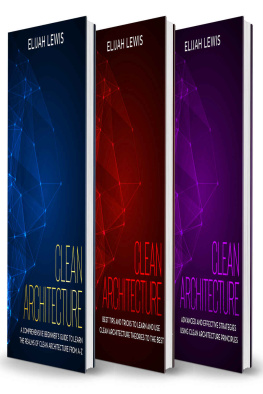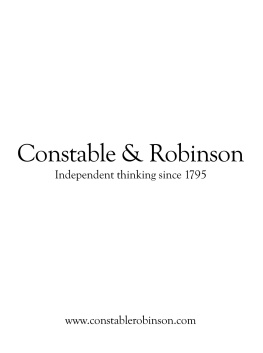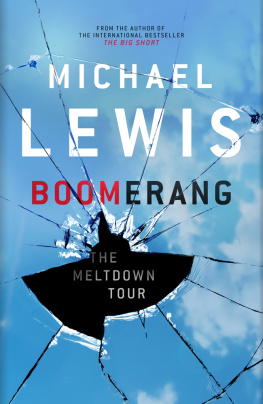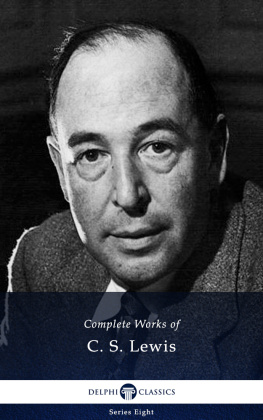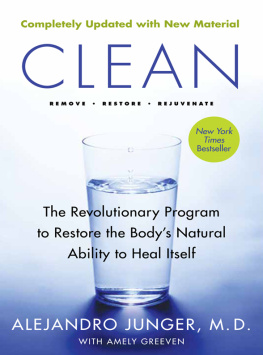Lewis - Clean Architecture
Here you can read online Lewis - Clean Architecture full text of the book (entire story) in english for free. Download pdf and epub, get meaning, cover and reviews about this ebook. year: 2020, genre: Computer. Description of the work, (preface) as well as reviews are available. Best literature library LitArk.com created for fans of good reading and offers a wide selection of genres:
Romance novel
Science fiction
Adventure
Detective
Science
History
Home and family
Prose
Art
Politics
Computer
Non-fiction
Religion
Business
Children
Humor
Choose a favorite category and find really read worthwhile books. Enjoy immersion in the world of imagination, feel the emotions of the characters or learn something new for yourself, make an fascinating discovery.
Clean Architecture: summary, description and annotation
We offer to read an annotation, description, summary or preface (depends on what the author of the book "Clean Architecture" wrote himself). If you haven't found the necessary information about the book — write in the comments, we will try to find it.
Lewis: author's other books
Who wrote Clean Architecture? Find out the surname, the name of the author of the book and a list of all author's works by series.
Clean Architecture — read online for free the complete book (whole text) full work
Below is the text of the book, divided by pages. System saving the place of the last page read, allows you to conveniently read the book "Clean Architecture" online for free, without having to search again every time where you left off. Put a bookmark, and you can go to the page where you finished reading at any time.
Font size:
Interval:
Bookmark:
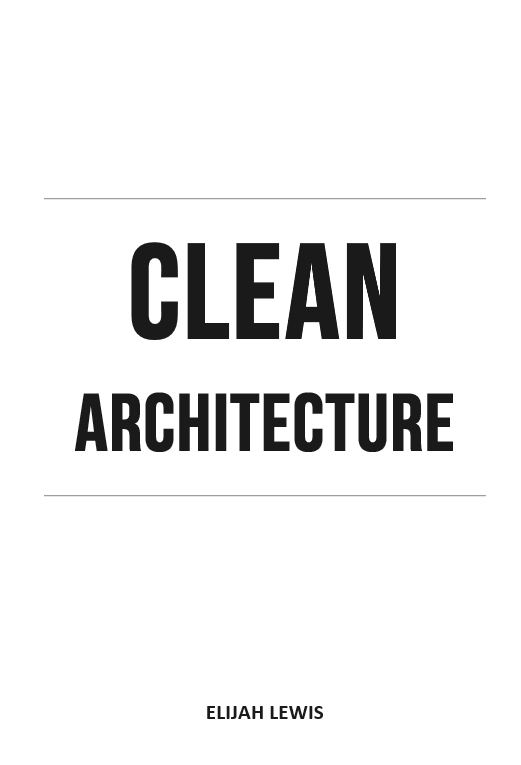
Copyright 2020 by Elijah Lewis - All rights reserved.
This document is geared towards providing exact and reliable information in regards to the topic and issue covered. The publication is sold with the idea that the publisher is not required to render accounting, officially permitted or otherwise qualified services. If advice is necessary, legal or professional, a practiced individual in the profession should be ordered.
- From a Declaration of Principles which was accepted and approved equally by a Committee of the American Bar Association and a Committee of Publishers and Associations.
In no way is it legal to reproduce, duplicate, or transmit any part of this document in either electronic means or in printed format. Recording of this publication is strictly prohibited, and any storage of this document is not allowed unless with written permission from the publisher. All rights reserved.
The information provided herein is stated to be truthful and consistent, in that any liability, in terms of inattention or otherwise, by any usage or abuse of any policies, processes, or directions contained within is the solitary and utter responsibility of the recipient reader. Under no circumstances will any legal responsibility or blame be held against the publisher for any reparation, damages, or monetary loss due to the information herein, either directly or indirectly.
Respective authors own all copyrights not held by the publisher.
The information herein is offered for informational purposes solely and is universal as so. The presentation of the information is without a contract or any type of guarantee assurance.
The trademarks that are used are without any consent, and the publication of the trademark is without permission or backing by the trademark owner. All trademarks and brands within this book are for clarifying purposes only and are owned by the owners themselves, not affiliated with this document.
TABLE OF CONTENTS
A Comprehensive Beginner's Guide to Learn
the Realms of Clean Architecture from A-Z
Best Tips and Tricks to Learn and use
Clean Architecture Theories to the Best
Advanced and Effective Strategies
Using Clean Architecture Principles
Architecture
Guide to Learn the Realms of
Clean Architecture from A-Z
ELIJAH LEWIS
Success in software development requires architecture as much as a building project, for example. Software architecture proposes better organization, quality in performance, reliability, system portability, impacting non-functional requirements directly.
The Layered Architecture
Layered architecture came up with the idea of separating presentation from business logic from the software. This way of organizing software development is to split the application into layers to separate responsibilities and make the software easier to maintain and reuse.
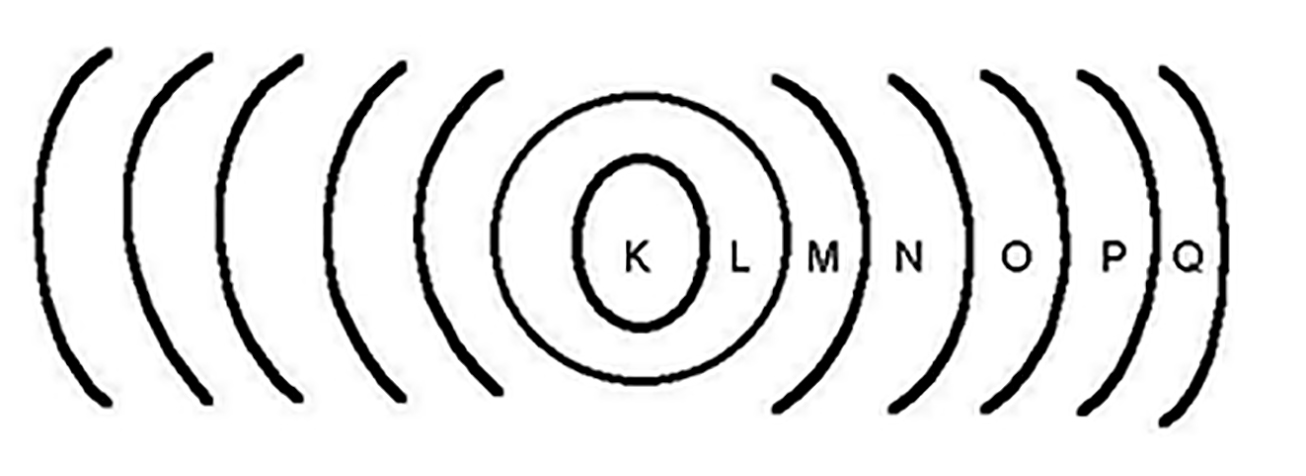
For the architecture of small software, usually, three layers are listed:
- UI (User Interface) - UI layer makes interaction and presentation of data to the user;
- Business Logic Layer (BLL) - Business Layer stores logic, dealing with software business rules, also called business logic layer or domain layer.
- DAL (Data Access Layer) - Data Access Layer: responsible for accessing and persisting application data;
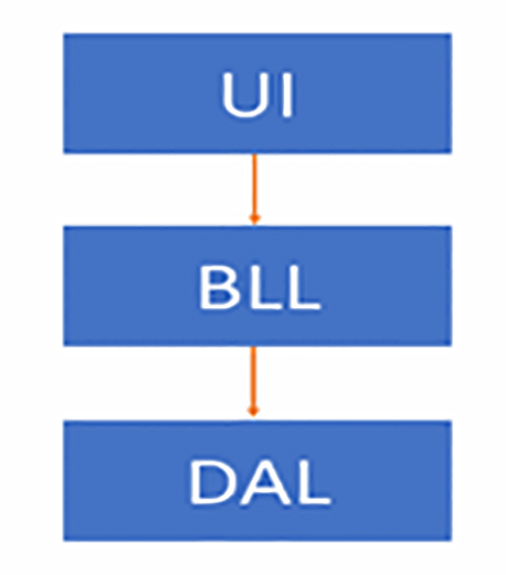
The operation of this architecture provides the following operation, and the interface layer should contain the pages to interact with the user obtaining information from the business layer, which in turn handles the application business rules and obtains information from the data access layer. The interface layer cannot know anything about the data access layer.
The purpose of this architecture is to create the possibility to change or update one layer without interfering with the other layer, based on a level of abstraction between the layers.

Looking at the diagram on the left, it is clear that the order of the three layers mentioned imposes a dependence of the upper layer to the lower one. Which can generate a possible problem in this form of traditional architecture? Designed in this order, software developers may have difficulty when making any changes to the System Database. They may make it difficult to test business logic code because it depends on the data access layer.
There are currently many architectures that rely on layered architecture, some increasing the number of layers, replacing or reversing the order of certain layers to bring more benefits to meeting non-functional requirements. Amid layered architecture, and the need for software changes came to The Clean Architecture.
The Clean Architecture
The clean architecture created by Uncle Bob (Robert C. Martin), represented by a diagram with concentric circular layers, is based on the isolation of these layers, so that replacement of components in the layer is easy and does not affect the entire system.
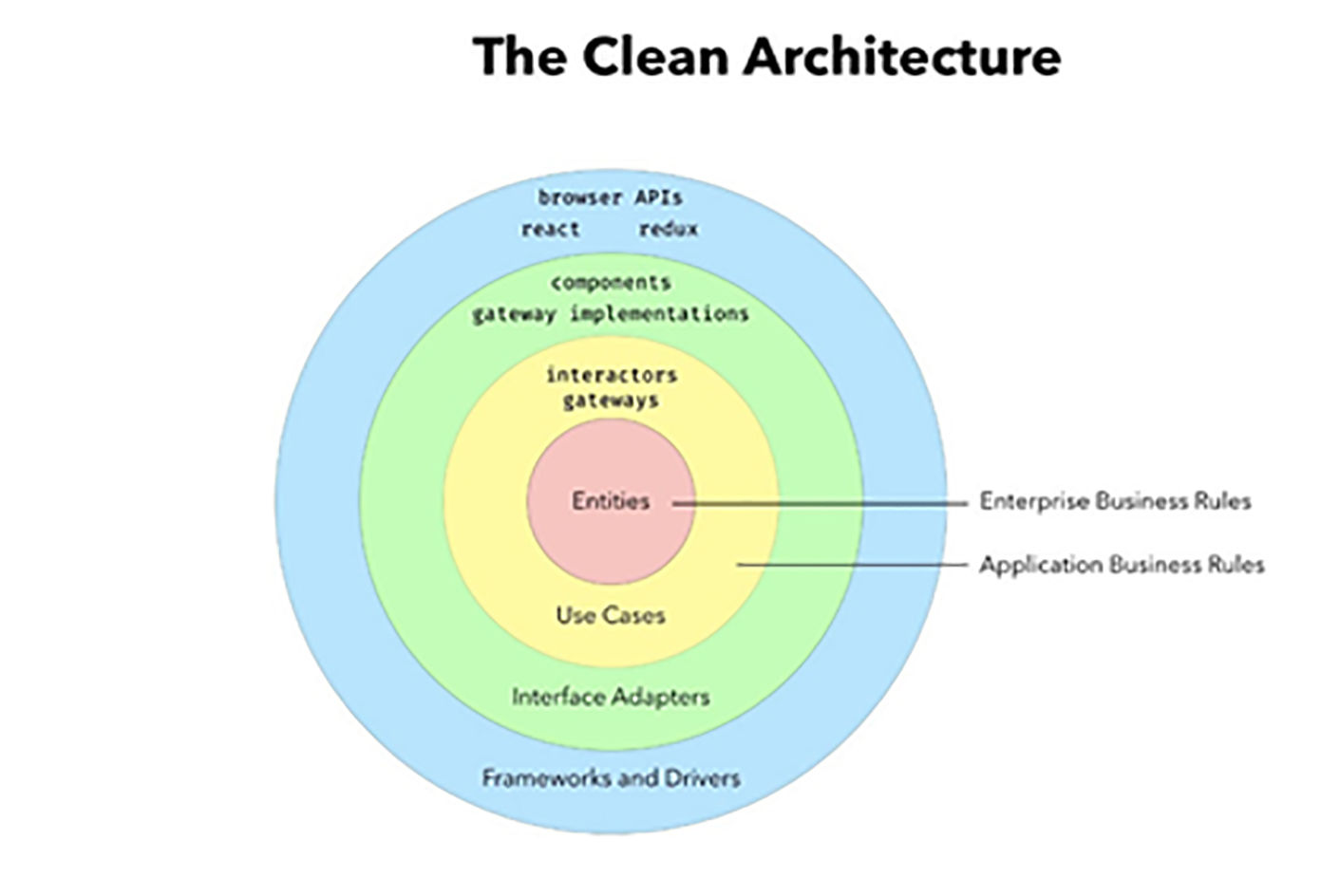
Swapping one component for another should not make the software work differently, or even stop working. Layer responsibilities are defined as follows:
Framework and Drivers
It is the outermost layer, protects the system from changes in detail, i.e., changes in this layer do not imply software functionality, so it is the detail layer and communicates with the next inner circle.
Interfaces Adapters (Adapters Interface)
Converts user-entered data into a structure that interacts with the system, where the presenters, controls, gateways, and repositories reside.
Application Business Rules (Application Business Rules )
It is responsible for processing information, where use cases are, where business rules are validated, and feedback on what is happening.
Corporate Business Rules (Enterprise Business Rules)
The layer of entities where business-level business rule codes are. These codes must be ready for reuse.
In the Clean Architecture proposal, all dependencies must point inwards; the outer circles are mechanisms and inner politics. In other words, the source code should not be aware of the layers external to your layer, should not have any dependency on these so the name of Dependency Rule.
The whole division and concept of this architecture provide a better organization of the software structure, making it easier for possible changes, due to the isolation of the layers. At any time, the interface components may be modified and in no way affect the meaning and operation of the software.
Are you interested in software architecture? I hope so because this is one of those aspects that should interest you regardless of your level of experience in the world of software development. If you are a junior programmer, you should be interested in it as soon as possible if you want to evolve as a professional.
Next pageFont size:
Interval:
Bookmark:
Similar books «Clean Architecture»
Look at similar books to Clean Architecture. We have selected literature similar in name and meaning in the hope of providing readers with more options to find new, interesting, not yet read works.
Discussion, reviews of the book Clean Architecture and just readers' own opinions. Leave your comments, write what you think about the work, its meaning or the main characters. Specify what exactly you liked and what you didn't like, and why you think so.

